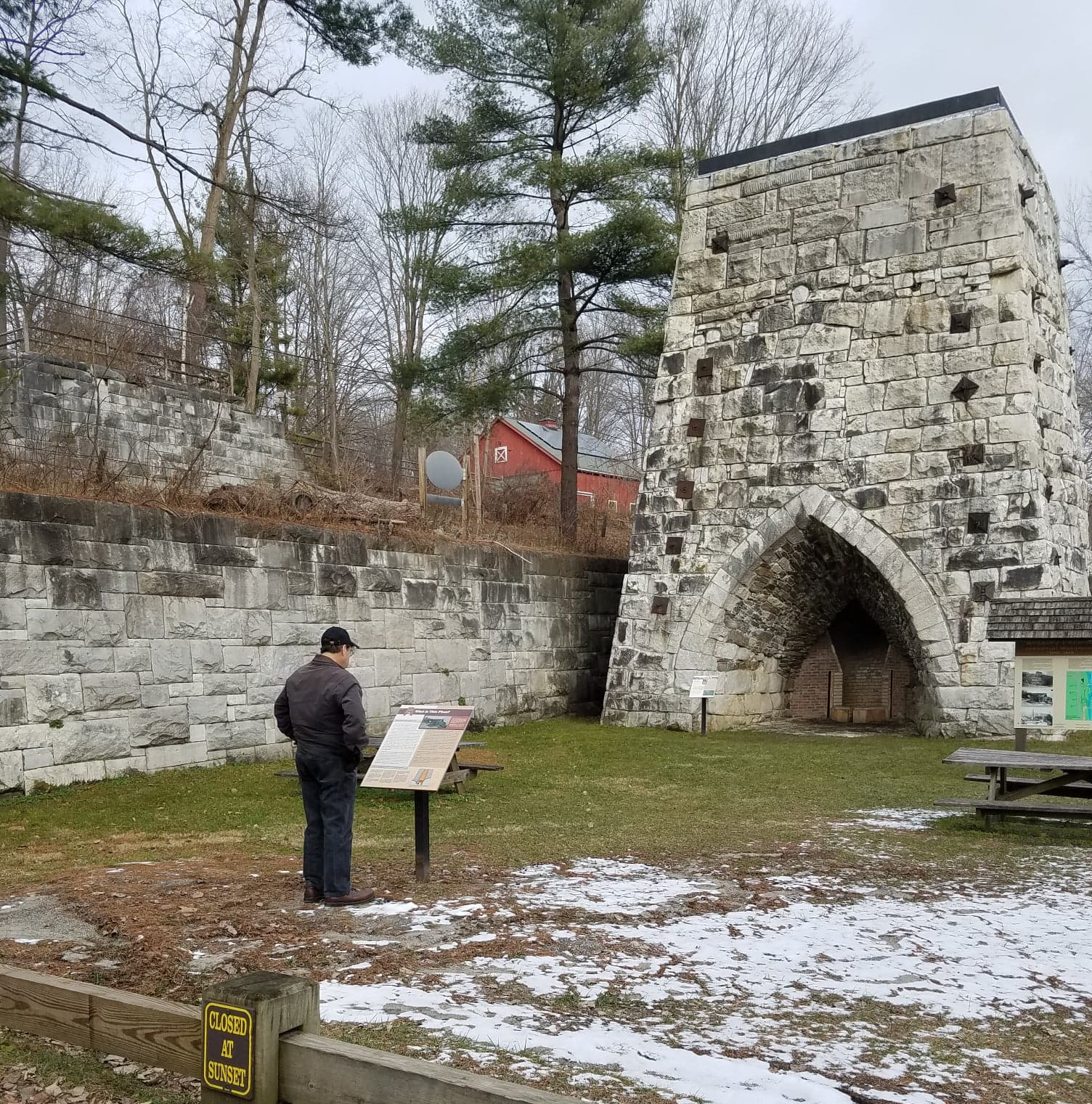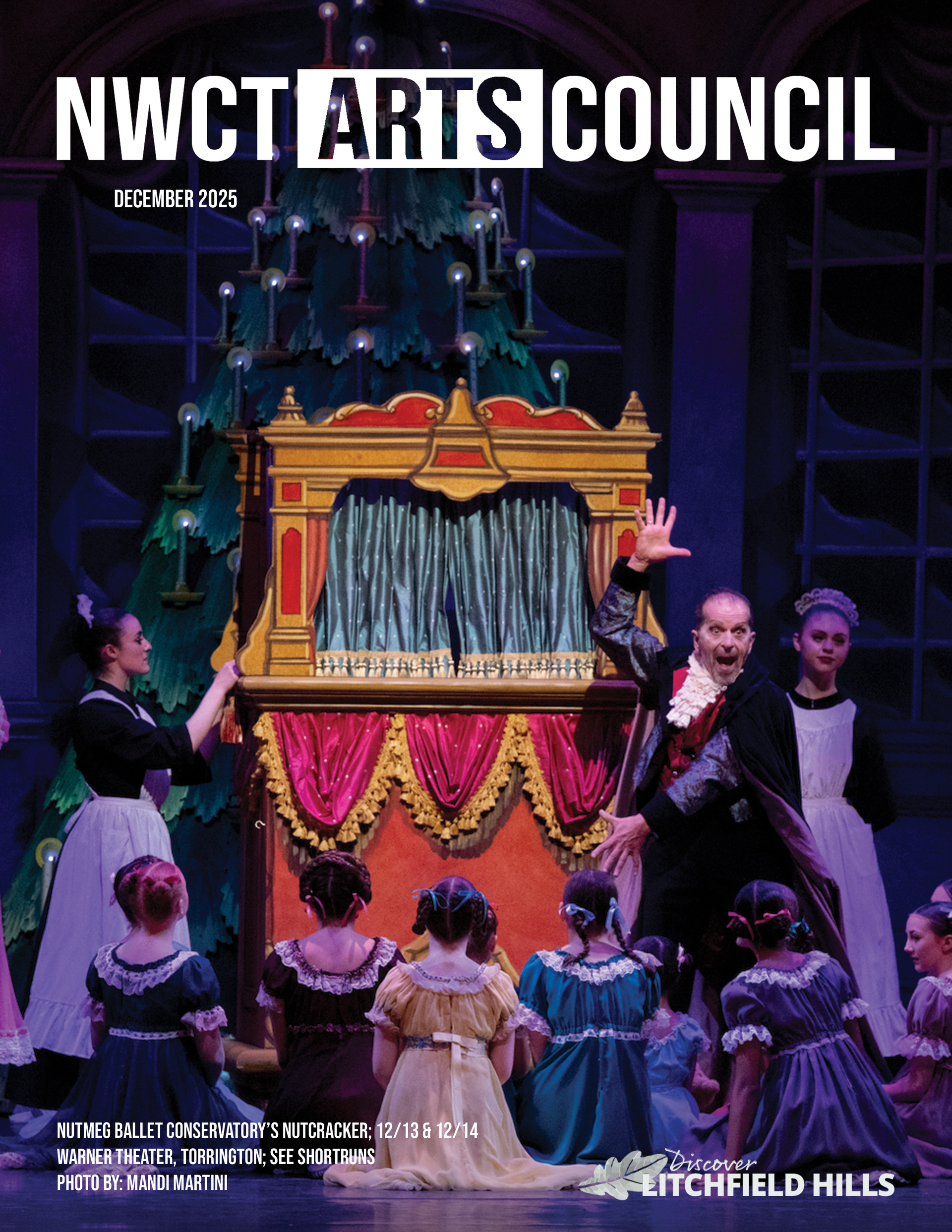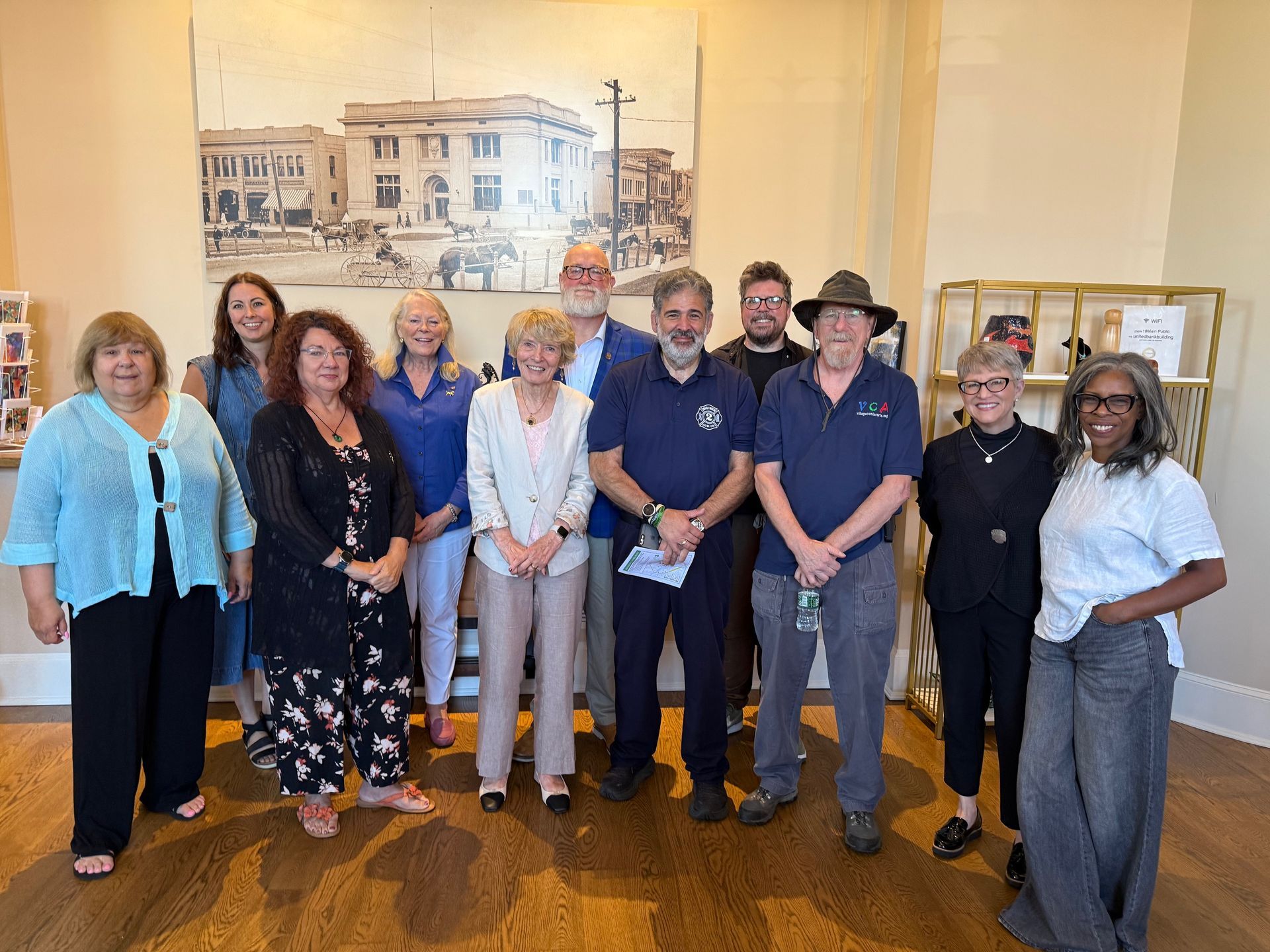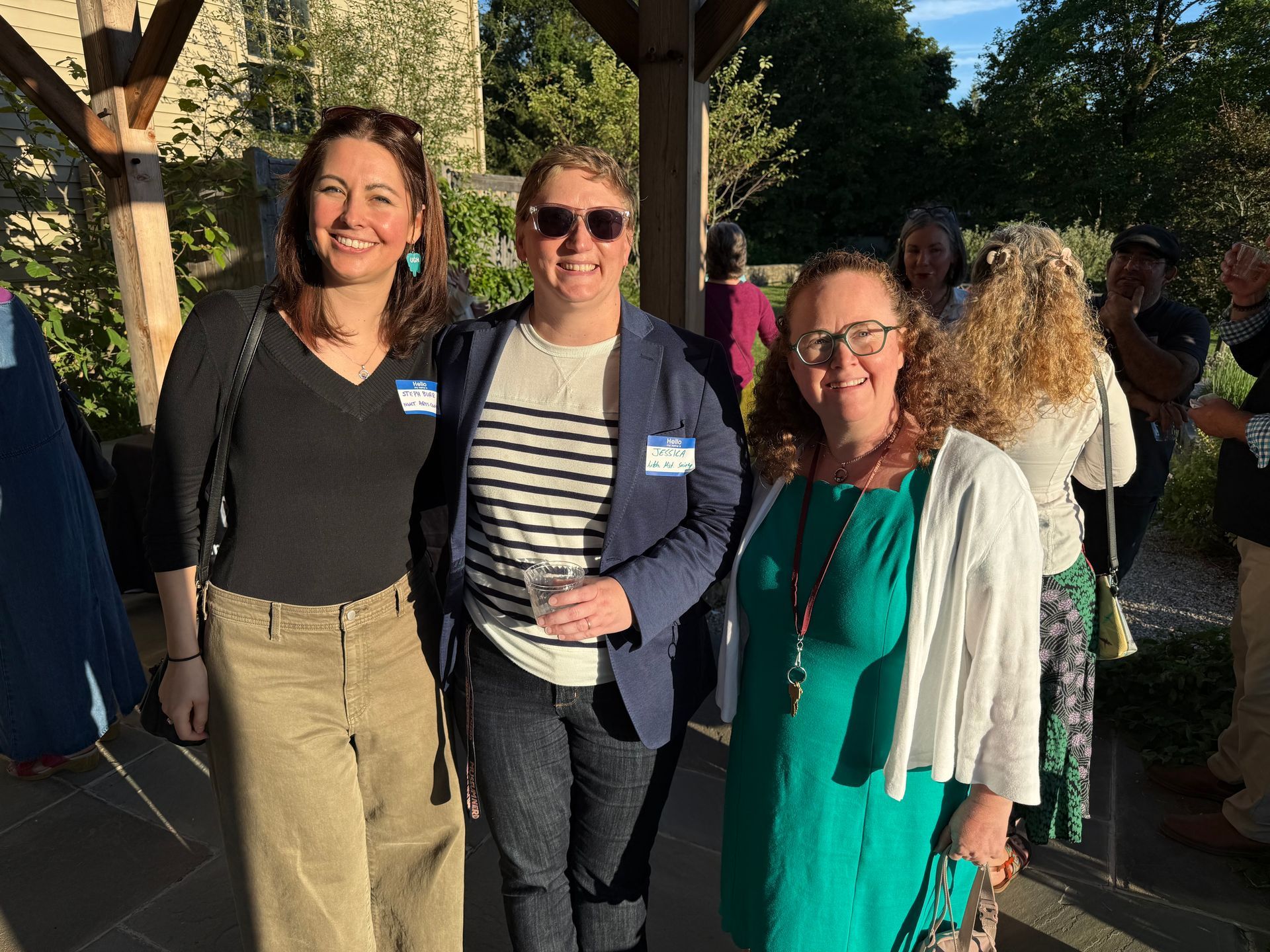Beckley Furnace: How an Old Blast Furnace Helps Us to Understand the Past
“What was this place, anyway?”
That is the subtitle of the website of the Friends of Beckley Furnace. It is also a fairly common question for tour guides at the physical site.
“That’s our favorite thing to hear,” says Geoff Brown, Secretary of the Board for the Friend of Beckley Furnace.
“We interpret the site and help people to understand how it fits into the history of Connecticut and beyond,” explains Dick Paddock, the President of the Board of Directors, and Beckley Furnace is indeed a site in need of some interpretation.
Header image: A close-up view of the inside of Beckley Furnace. Photo by Ella Frauenhofer.

A visitor reading one of the informational placards maintained by the Friends of Beckley Furnace. Photo by Ella Frauenhofer.
Standing huge and largely alone in a cleared patch of state land in East Canaan, its square base tapering off towards the top, the purpose of Beckley Furnace is not obvious to the average observer. Over time, most of the buildings which once surrounded it have been destroyed; if not for the explanatory plaques maintained by the Friends of Beckley Furnace, it would be difficult for the uninitiated to guess what it once was.
All the same, this place once played an important part in both local and national history. According to Paddock, the area’s iron industry began in the early 1700s, when the difficulty of transporting heavy ore long distances made mining and processing it locally more economical for English colonizers in the area.
By the time of the American Revolution, iron production in western Connecticut was established enough that it was used to create munitions for the revolutionary armies. “Salisbury was the arsenal of the revolution,” Paddock notes.
The region was also important in another revolution in America: the industrial revolution. Iron mined in Salisbury “carried the country west” in the form of railcar wheels made in the area.
Eventually, however, cast iron wheels of the type made from Salisbury iron were phased out in favor of steel, a better material for railcar wheels. By that time, the demand for iron had also outpaced supply in Salisbury, both of ore and of charcoal, the fuel used to power blast furnaces in the region. The furnace closed in 1919.
As interesting as the rise and fall of Beckley Furnace and the surrounding iron industry is, and as important a window into a particular era of local history it is, recognition of this importance was a long time coming. The furnace was closed for seventy-seven years before a group of local citizens were able to have the site recognized as an industrial monument.
Since then, the Friends of Beckley Furnace have been tireless in their efforts to maintain the furnace and to educate the public on the nature of the site. Partnering frequently with local schools, the group has been instrumental in teaching young people about a variety of facets of the history of the local iron industry. From a learning lab funded by the Upper Housatonic National Heritage Area to partnerships with the Audubon Society to help students do an environmental audit of the former industrial site, the Friends have consistently employed innovative techniques to engage both teachers and students in learning about the furnace.
The COVID-19 pandemic has unfortunately derailed much of Beckley Furnace’s educational programing, but Brown and Paddock are hopeful that these turbulent times will also lead to a renewed interest in the site.
“The pandemic crippled our school program, but I hope we can start building back,” says Brown. “One good thing is that Beckley Furnace is outside.”
During the pandemic, increased interest in outdoor activity led to new visitors to the furnace. “Their interest in the site was marginal,” Paddock admits, “but they came to be outdoors.”
With the explanation of Paddock, Brown, and other skilled guides, the landscape alone at Beckley Furnace can be instructional. “Looking at the slag heap, you’re tempted to see the forest primeval,” Paddock says, “but in reality, forested areas and open land are one of the really peculiar legacies of the iron industry.” Because the iron industry relied on charcoal for its fuel, firms maintained tracts of land for “charcoal bush” where trees were cut on a twenty-year rotation. Although the forests were still heavily depleted by 1919 when the furnace closed for the last time, much of the charcoal bush has gone on to become densely grown and relatively untouched habitat for many native animals and plants.
In the future, the Friends of Beckley Furnace hope that the furnace will be the site of more cultural activity, such as musical performances and possibly a museum.
Without context and interpretation, few if any historical sites are completely self-explanatory. It is the admirable work of dedicated community groups like the Friends of Beckley Furnace that make the physical remnants of history local, national, or global intelligible and interesting to audiences.
Unassuming and odd, Beckley Furnace provides a fascinating glimpse into the past of northwestern Connecticut. It is the admirable work of the Friends of the site make this place a true hidden gem for those interested in learning about the forces that have made our area what it is today.
-
Tours of Beckley Furnace will resume after Memorial Day. They are offered on Saturdays from 10 AM to 2 PM. More information is available on the Friends of Beckley Furnace website, https://beckleyfurnace.org/.


















